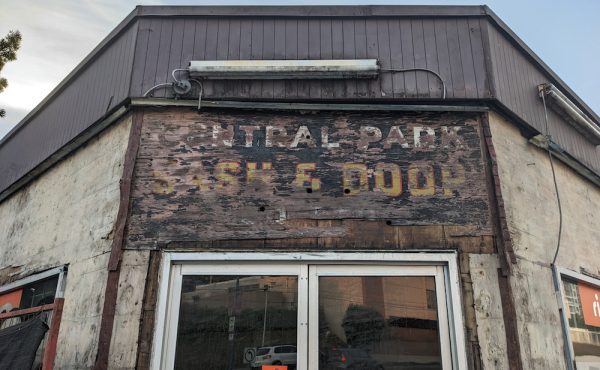 In order to turn his idea of converting the old CPR tracks running parallel to 6th Avenue St into a historic streetcar line, Dale Laird first needed some historic streetcars. And Laird knew of a couple of interurban cars that had recently returned to Vancouver after a long journey.
In order to turn his idea of converting the old CPR tracks running parallel to 6th Avenue St into a historic streetcar line, Dale Laird first needed some historic streetcars. And Laird knew of a couple of interurban cars that had recently returned to Vancouver after a long journey.
It is unfortunate that of all the streetcars that ran regular routes in Vancouver between 1895 and 1955, only two are known to still exist (although Laird says that another one is rumoured to be sitting somewhere in Ruskin, near Maple Ridge). One is Car #53, owned by the daughter of streetcar fan Ernie Plant and leased to the Old Spaghetti Factory in Gastown. The other is Car #153, the property of the City of North Vancouver and currently being stored underneath the Fen Burdett Stadium in Mahon Park. Neither of these was going anywhere soon. But there existed two original Vancouver interurban cars that would do the job.
The first was Car #1207, an interurban car built by the B.C.E.R. (B.C. Electric Railway Company) in New Westminster in 1905, which used to run the Marpole to Steveston route until 1958. After retirement it had been purchased by a couple of Seattle area residents, Byron Cole and Dick Thrash, who had been storing it at a railway museum in Snoqualmie Falls. But they preferred it to be used by the public rather than sitting in a museum. They also knew that the Transit Museum Society (TRAMS) had the expertise and the manpower to run it. So they gladly accepted when BC Transit approached them about leasing it from them, and it came to Vancouver in 1989 and then restored as a centennial project in 1992.
TRAMS had been founded in 1986 by five BC Transit employees: Brian Kelly, Ed McDonald, Al Menzies, Angus McIntyre, and Don Redmond. The Society took on the responsibility of maintaining the historic bus fleet when BC Transit could no longer do it. Until then, BC Transit had been the ones to rent out the buses for special events and particularly to the movie industry. However, the financial burden of trying to meet the schedules of the movie industry eventually became too much, as it was BC Transit’s employees who had to run the buses. It worked out better for the company to be the sponsor of the Society, but leave it to the volunteers to maintain and operate the buses. TRAMS raises money by renting their historic buses to the movie industry and through souvenir sales. BC Transit provides the parking spaces, work space, and spare parts from retired buses. Of the original founders of the Society, McIntyre is the only one still active in TRAMS and also the only one still working for Coast Mountain Bus Company (CMBC), now part of TransLink. McIntyre has the highest seniority out of almost 1,000 CMBC drivers at the Vancouver Transit Centre, having worked as a driver for almost 40 years.
Though Car #1207 had been restored, it had not yet seen actual service, and was languishing in a transit shop in Port Coquitlam. Laird discussed his idea with the BC Transit’s Vice President of Maintenance, Brian Hollingshead, who gave his support. So Laird and Dave Rudberg met with Vancouver Mayor Phillip Owen, who loved the idea. The next step was to acquire the track.
Next time: Streetcars return to Vancouver
Many thanks to Dale Laird of TRAMS for his invaluable help with this series of articles. Check out the Transit Museum Society website for more information on the Society.
**
John Calimente is the president of Rail Integrated Developments. He supports great mass transit, cycling, walking, transit integrated developments, and non-automobile urban life. Click here to follow TheTransitFan on Twitter.

